Parallelism in Breath of the Wild and Tears of the Kingdom: Two Halves of a Whole Masterpiece
Posted on September 02 2023 by Chakell Herbert
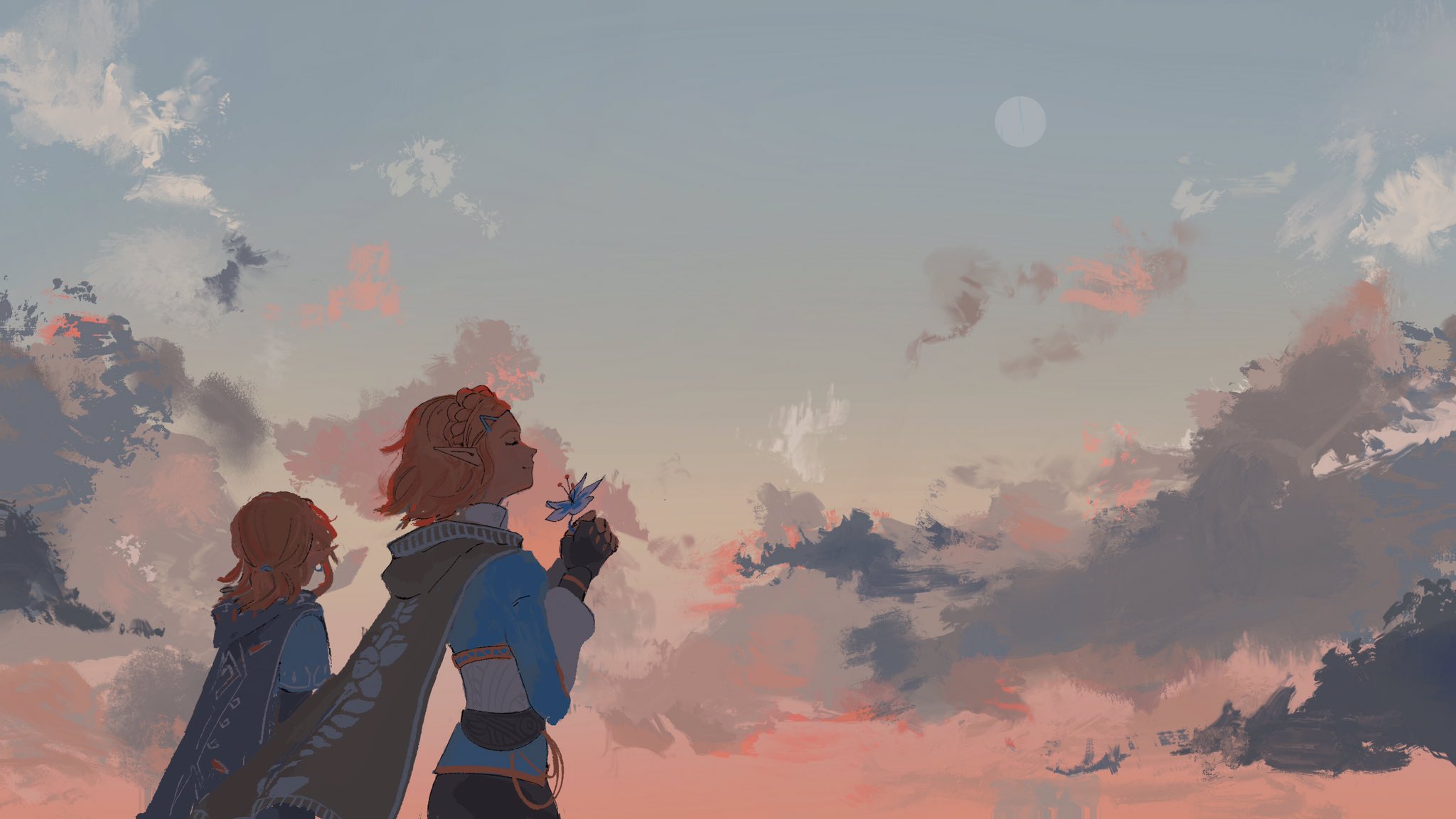
Warning: This article contains spoilers for the end of Tears of the Kingdom.
Something I have been thinking about for the past few months as I have pondered Tears of the Kingdom is the concept of sequels.
As an avid reader, binge-watcher, and multi-fandom fanatic, I have had my fill of sequels to my beloved books, movies, and video games. I am all for expanding a story with more adventures, more interactions between my favorite characters, and more lessons and takeaways to unfold.
However, not all sequels are created equal.
I’m not sure why some sequels fail to exceed our expectations. Though I often see problems manifesting in things like a lack of direction in plot after the original story, a lull in direction (think second-book-of-a-trilogy syndrome), beloved characters acting completely different than their established personality, or problems with continuity.
In my experience, I give the probability of a sequel being just as good as its predecessor about a 50/50 chance. Sometimes I’m surprised, sometimes I’m let down. And in rare cases (think masterpieces like Shrek 2, The Hunger Games: Catching Fire, Kingdom Hearts 2, or The Dark Knight), some sequels manage to outdo their original stories in my book!
When Tears of the Kingdom was announced, I was fully onboard with seeing a continuation of Breath of the Wild, which quickly became one of my top games in my favorite franchise. However, I was a tad skeptical because The Legend of Zelda is notorious for its lack of direct sequels to previous entries. There are very few exceptions (Majora’s Mask, Spirit Tracks, Link’s Awakening), but even in those cases, we don’t return to the same world we knew in the original, many of the characters are different, and the plot has no relevance to the previous adventure.
So with that in mind, I wasn’t sure what to expect in this much-anticipated sequel.
Where could Tears of the Kingdom possibly take Breath of the Wild’s story? Could it pull off being just as, if not even more, powerful, memorable, and monumental than its predecessor?
Of course it could! Why did I even doubt?
There’s a reason why Tears of the Kingdom works so wonderfully — because it’s the second half of a full story. In my book, Breath of the Wild and Tears of the Kingdom are two halves of a whole, complete with endless paralleling moments for our two main characters, Princess Zelda and Link.
These two beautiful stories come each contain their own building blocks to create a complete masterpiece of storytelling.
Here are just a few of the moments of parallelism that really clinched these two entries in the top tier of the Legend of Zelda series for me.
Self-Reliance Vs. Reliance on Others

In the beginning of Breath of the Wild, Link wakes up very much alone. He has no memory, is unaware of why he’s been sleeping an unknown amount of time, and has no connections or relationships.
Apart from one.
The first voice he hears when he wakes up in the Shrine of Resurrection is Princess Zelda’s. He doesn’t know who she is, of course, but registers that her voice is vaguely familiar. Over time, he remembers his friendships with the Champions who are now long gone. And through traversing iconic spots in Hyrule, he recovers his memories and remembers his and Zelda’s once-blossoming relationship from a century before.
However, in the beginning, Zelda, the one person he has left in this post-apocalyptic Hyrule, is unreachable. He can’t reunite with her until he regains his strength again and can successfully best Calamity Ganon after a century of him looming over Hyrule Castle. Taking a different approach from many previous Zelda titles that include a companion to guide the hero, Breath of the Wild Link is very much on his own this time around. Apart from a few helping hands along the way, it really is up to him and him alone to finish the work that was started so many years before.
And he does a heck of a job at redeeming himself in the end as he helps Princess Zelda take down the Calamity once and for all.
Princess Zelda on the other hand has her own story of personal growth in Breath of the Wild. She lacks confidence in her ability to live up to her role as the princess who holds the blood of the Goddess. She has an agonizing struggle throughout the narrative, desperately trying to unlock her sealing power. She’s constantly pressured by others, she has no living mentor to help her understand her birthright, and she is so fixated on this inherited power that she hardly allows herself to feel anything other than shame.
However, after years of struggle, when her kingdom (and more specifically, her knight) is on the brink of defeat, her power finally manifests, and from then on, her whole demeanor changes. From then on, she’s determined to save Link and restore her beloved kingdom; and having no one else to rely on for the time being, she makes a choice to rely fully on herself. She knows full well that she’s the only person left who can make a difference in the world. So she courageously strides right into Calamity Ganon’s clutches, sealing both herself and the monster away for a century, until Link can help her finish the job.
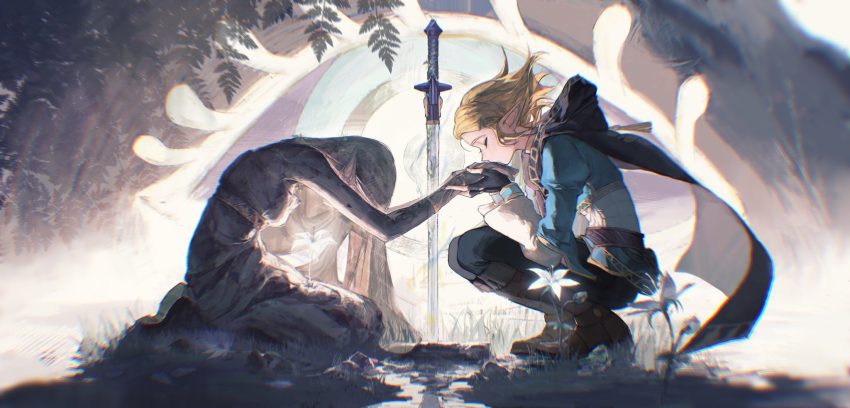
This emphasis on self-confidence and power is also explored in other moments throughout the game. Through Zelda’s diary, we learn about her uncertainty about her own capabilities and her insecurities, but more interestingly, we learn that Link also carries the weight of the world on his shoulders and worries deeply about his ability to live up to his role as well.
She writes:
“When I finally got around to asking why he’s so quiet all the time, I could tell it was difficult for him to say. But he did. With so much at stake, and so many eyes upon him, he feels it necessary to stay strong and to silently bear any burden. A feeling I know all too well… For him, it has caused him to stop outwardly expressing his thoughts and feelings. I always believed him to be simply a gifted person who had never faced a day of hardship. How wrong I was…”
The true nature of Link and Zelda are unveiled more so in this game than any other games in the franchise, and I love those details. Overall, I see Breath of the Wild as a story that focuses on discovering that we have an inner strength we don’t always realize, and that we are capable of so much more than we sometimes believe. Both Link and Zelda rely on each other in numerous ways throughout their takedown of Calamity Ganon, but throughout the whole story, it’s their discovery of their self-confidence, their capacity to try again after failure, and their eventual triumph that shines. Both our hero and our princess have to discover the power and courage they have within themselves in this adventure, which ultimately allows them to finally come together and start rebuilding their kingdom in the end.
And now to Tears of the Kingdom.

From the get-go, Tears of the Kingdom is Breath of the Wild’s opposite. The beginning involves Link and Zelda, who have obviously stuck together like glue for the past few years, exploring the depths of Hyrule Castle. This game’s theme of connection is apparent from the first shots of our hero and princess together, and even more so when Link fails to grab her hand as she falls into the abyss.
That loss of connection to the person who is most important to him is the driving factor for his entire journey this time around.
I believe connection and relationships are the main theme of Tears of the Kingdom. One of the other benefits this narrative has is the inclusion of already established character relationships from Breath of the Wild and of opportunities to open them up for more depth. For example, Zelda and Link have fully restored their loving relationship with each other, the new champions are still very much a part of their lives, and many familiar faces we got to know and love in Breath of the Wild are aiding the princess and her knight in restoring the kingdom to its former glory.
Instead of Link going about his heroic duties alone, this time, many fellow Hylians know who he is and somewhat about what he and Princess Zelda have done for them! They are all willing to step up to help however they can. Link can fight with Hyrulian soldiers trying to take down baddie camps, and he has the power of the Sages and deep-rooted friendships by his side. In fact, the Sages never fail to show up after making their vow to him. They even save Link from a fatal attack from Phantom Ganon in Hyrule Castle; and Tulin even shouts out, “You don’t have to fight all by yourself, you know?!” when they appear in the flesh to help Link take on the Demon King’s army in the Gloom’s Lair.
Even from the beginning, Link clutches the hand of Zelda’s projection and instills her power over time in him; and when he eventually retrieves the Master Sword from her, she vows that, when Link and the Master Sword next face the Demon King, Link will have her strength to help him — she will be with him. *sobs*
And let’s not forget the vital relationships Zelda has with those in the past throughout this adventure. Without the guidance and love of Queen Sonia, King Rauru, and Mineru, she wouldn’t have been able to accomplish as much as she did.
What else symbolizes relationships and connection? Hands. Hands are everywhere through this adventure, from Link grasping hands with his friends to receive their Sage vows, to the Zonai devices that require Link’s gifted arm to power them, to the iconic shots of Link both failing to grab Zelda’s hand in the Depths at the beginning and of Link successfully catching her hand as they reunite in the golden sky in the finale.
Tears of the Kingdom’s focus on our need for connections, community, and meaningful relationships is a direct parallel to Breath of the Wild’s focus on discovering one’s inner, independent strength.

As it goes to show, when you have both, you truly can take on any challenge the world has to throw at you, including an evil, power-hungry Demon King!
Mirrored Sacrifices
In Breath of the Wild, we see many sacrifices. The Champions give up much of their lives to help with the cause to take down Calamity Ganon. Zelda sacrifices her life for a century to keep the monster confined in Hyrule Castle. Kass sacrifices time with his family to make sure his teacher’s messages about the hero and the princess of Hyrule live on. Even Dorian, the Sheikah guard in Kakariko Village, makes sacrifices to protect his daughters from his past involvement in the Yiga Clan.
However, the sacrifice that truly became the catalyst for the story of Breath of the Wild — the sacrifice that ensured that there would still be a fighting chance to defeat the Calamity was made by Link. Link is willing to lay down his life for Princess Zelda when they are surrounded on Blatchery Plain. He fights Guardians left and right, taking hit after hit until he can hardly stand, and still he refuses to fall even when he’s on the brink of death. He doesn’t let his guard down until he ensures Zelda is out of harm’s way, in hopes that she’ll have a chance not only to seal Calamity Ganon away, but to live as well.
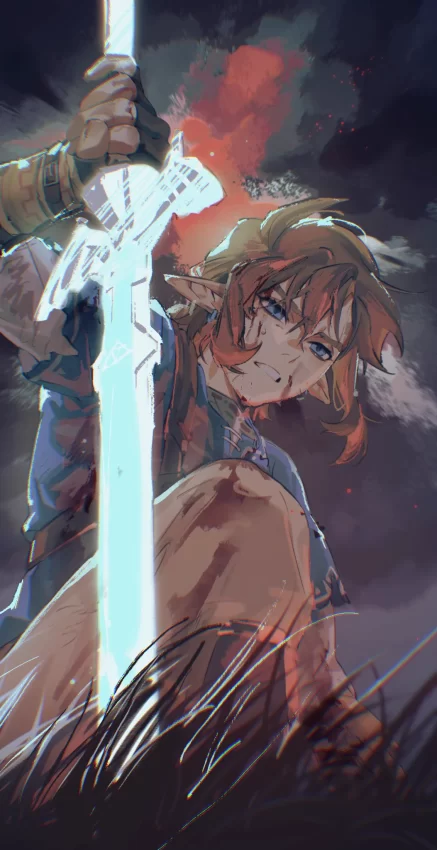
In Tears of the Kingdom however, we see Princess Zelda step up to make greatest sacrifice that enables Ganondorf to be destroyed. Throughout her time in ancient Hyrule, you can see how much she cares for and thinks about Link. Sonia is well aware of his existence and how much Zelda cares about him by the time the memory is shown where she describes her beloved knight. And in the moment when the withered Master Sword is transported to her, she becomes fully aware of why she was sent back in time and what she must do to save her kingdom and, especially, Link.
Zelda’s sacrifice to swallow her Secret Stone and imbue the Master Sword with her sacred power is in many ways much more heart breaking than Link’s in Breath of the Wild. This is a sacrifice that won’t end in death, but quite the horrific opposite. As a dragon, Zelda will live forever, without ever being fully conscious, without any memories of who she truly is, never to recognize her loved ones again. More importantly, instead of making this sacrifice in the spur of the moment, Zelda has to premeditate her decision to undergo draconification. She probably dwells on what this decision will cost her for days. But eventually, we see her confidently stride to the infamous platform in ancient Hyrule to put the tools in place for Link’s use in the future. She performs the horrific deed that costs her everything, but ensures that her knight has a fighting chance.
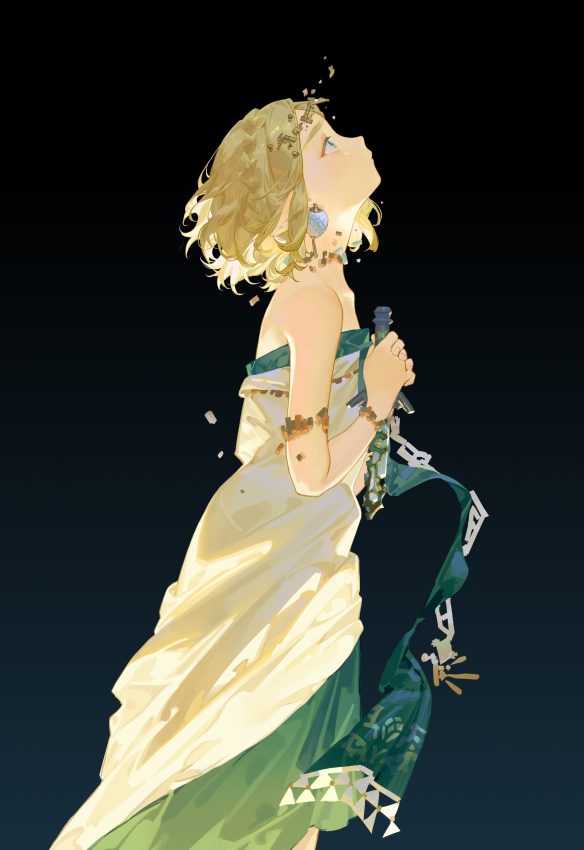
In past Zelda games, we don’t always get to see the sheer dedication Link and Zelda have to one another like we do in these two adventures. I absolutely love the parallels between these two main characters giving everything they can possibly offer to the other in both Breath of the Wild and Tears of the Kingdom. Their commitment to each other is powerfully evoked in their actions to both defeat evil, and to do everything they can to reunite. Their mirrored sacrifices truly play off each other and make for insanely beautiful, compelling, and consistent storytelling.
Which brings me to the final count of parallelism in these two adventures.
Parallels of Love
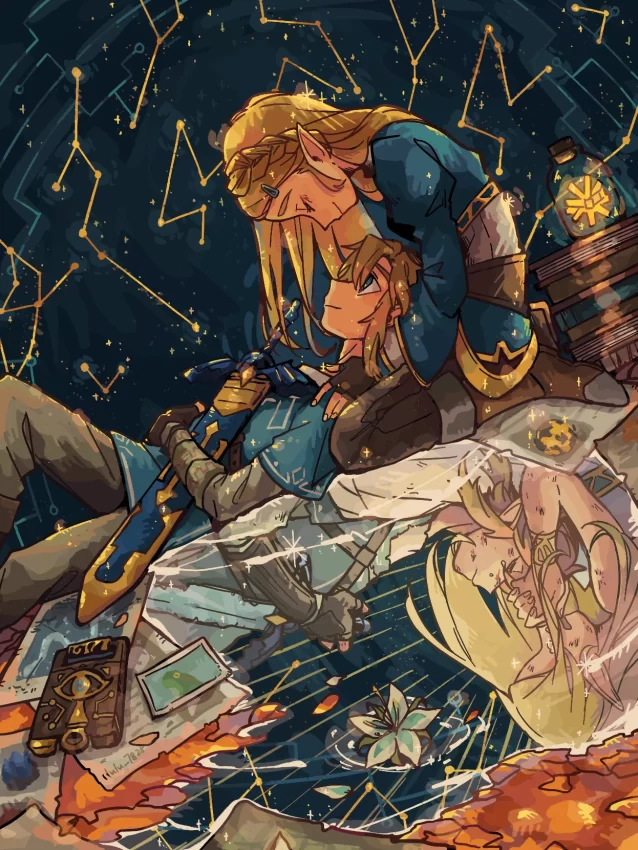
Throughout the Zelda series, Link and Zelda always have a relationship with one another. Whether their relationship is portrayed as a platonic friendship (A Link to the Past, The Minish Cap, Ocarina of Time), a budding romance (Spirit Tracks, The Wind Waker, and Skyward Sword), or even a simple dutiful commitment to each other (The Legend of Zelda, Twilight Princess), we have seen many different manifestations of these two over the years.
For me, I am always one who loves more heartfelt interactions between the spirit of the hero and the princess of Hyrule — isn’t the relationship between these two beautiful characters what this series is about?
In more recent titles, (specifically starting with Skyward Sword), Link and Zelda’s interactions have become much more meaningful and suggest something far deeper than friendship or duty: complete and utter devotion to each other. I won’t get into all the evidences in Tears of the Kingdom that imply that the Princess and Link are in a romantic relationship, but from the way they are portrayed in this universe, there’s hardly any doubt.
This is a Link and Zelda who aren’t instantly drawn to each other. Instead, they struggle on screen with their relationship, which is something we have never seen in any previous titles in the series. And from then on, we have the pleasure and privilege to watch their relationship slowly develop and change from duty, to friendship, to a pure, beautiful love. Their commitment and devotion each other is hardly implied — it’s shown beautifully and transparently.
And the power of their love for each other is paralleled in both games.
In Breath of the Wild, Kass’ final song and Mipha’s implied words of wisdom she was about to give Zelda before the Calamity strikes tell us that it was Zelda’s love for Link that was the key to awakening her sealing powers. She had been trying to figure out how to approach these powers logically, being the scholar that she is, not understanding that it was her desire to protect someone she loved fully that would allow them to manifest. The two were side by side every day, exploring Hyrule together, and confiding in each other in quiet moments they shared, which allowed this pure spark of love to blossom.
In that glorious shot of her pushing a mortally wounded Link out of the way to protect him from a Guardian blast, you can see fully that her only motivation in that moment was the pure love she for the boy who was willing to give up everything for her.
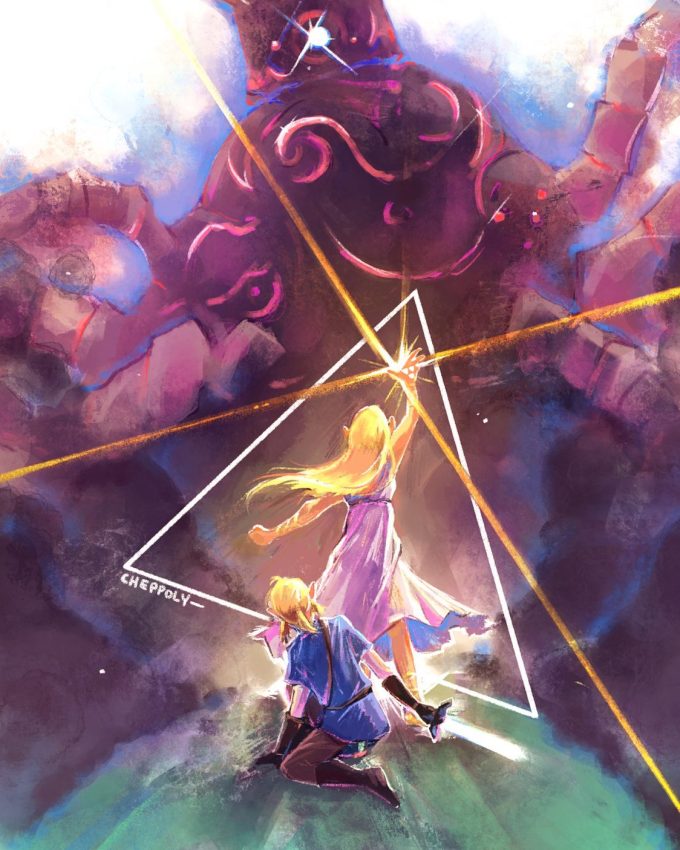
This scene in Breath of the Wild has always been one of the most powerful in the entire Zelda series for me, for one, because prior to this we’d never seen Link on the brink of death canonically, and we’ve never seen Princess Zelda having to save him directly before. But mostly, it’s the depiction of the power of her love for him that really touches my cheesy heart the most.
And of course, Tears of the Kingdom has the perfect parallel to this literal game-changing moment.
Breath of the Wild’s narrative is all about Zelda’s growing fondness for Link and watching their relationship go from rocky to solid. There’s no doubt she doesn’t love him. But still, Link’s feelings for Zelda are still left a little ambiguous due to his memory loss (though Bolson’s mention of flowing flower petals symbolizing “endless love” definitely implies that Link returns her feelings in the end, especially with the final shot of the game showing hundreds of Silent Princess petals billowing in the wind).
However, in Tears of the Kingdom? The declarations of love are on the wall.
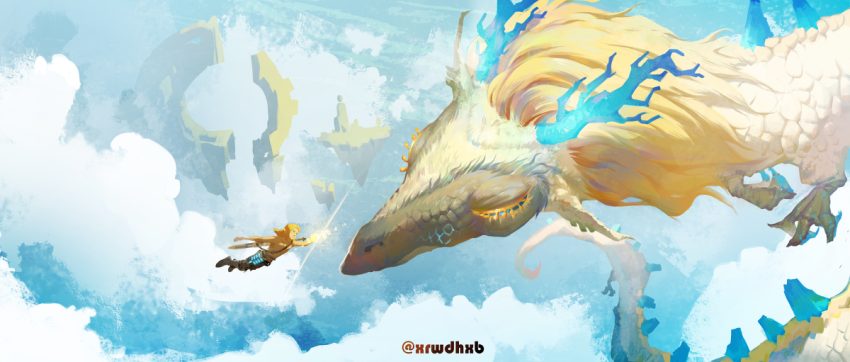
Link’s first goal from the moment he wakes up after his near-fatal attack from Ganondorf is not what one would expect it to be. It’s not “Destroy Ganondorf,” it’s “Find Princess Zelda.”
Finding his princess and bringing her home is his number-one priority in this story. And you would think that this first and final goal would be marked as complete when he discovers the identity of the Light Dragon, but still, this top item on Link’s to-do list remains blinking and incomplete.
Why?
It’s not until the Demon King’s demise (pun intended) that we see Link’s true feelings for his princess unfold. When he is transported to the spirit-like world with the sleeping Light Dragon after the final battle, he is approached by King Rauru and Queen Sonia. These monarchs knew full well that there was nothing they could do to bring someone back from draconification, so why try now? What would make a difference?
But mirroring Zelda’s desperate moment to save the boy she loved during the Calamity, Link is also desperate to bring his princess back.
Like Zelda, I believe he has deep love as his motivation to save her. And through him, the king and queen channel their powers and miraculously restore both his arm and his beloved Princess Zelda to her humanity, finally allowing his first priority to be marked as complete.
What follows is probably the most emotionally charged and beautiful ending I’ve ever seen in my life. But I’ll gush over that another time.
From Link sheathing the Master Sword to allow Zelda to sob in his arms, to Zelda managing to gain enough consciousness as the Light Dragon to never fail at catching Link in the final battle, to Link returning the favor as he successfully catches Zelda as they plummet to the surface, the devotion between these two is unmatched in these two stories.

Conclusion
The Legend of Zelda series is always full of brilliant storytelling, heavy themes, whimsicality, and the overarching trope of a young hero and princess working together to destroy a terrible evil. Some games are more memorable than others, some are weird but charming, and some quite literally have nothing to do with Princess Zelda at all.
But in Breath of the Wild and Tears of the Kingdom, I feel that they truly earned their place among the best in the series (and the best among all video games, but I might be biased).
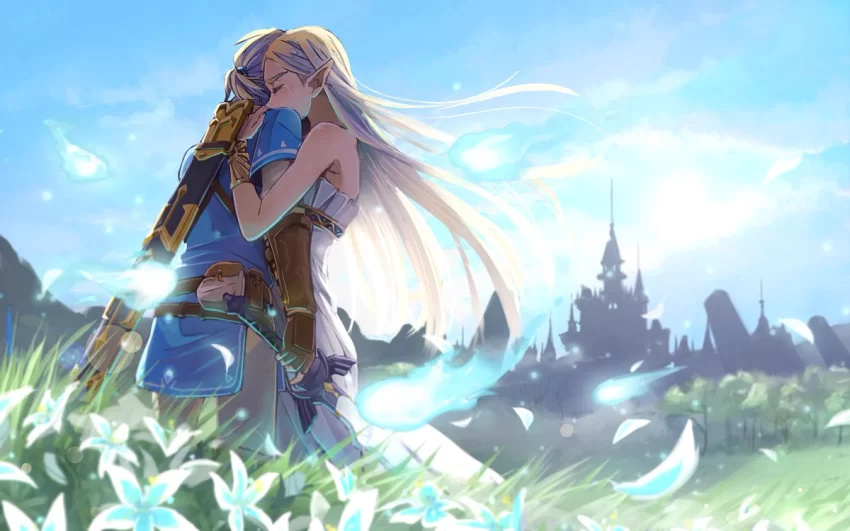
Sure, these two stories are vastly different and focus on different lore aspects of Hyrule (the Sheikah and the Zonai). But putting them together simply enriches the full narrative they tell. We get to see our Hero and Princess grow and develop in ways we never have in other games. We see them tackle Calamity Ganon, who was truly just the Demon King’s puppet, and then face the real threat together. And we get to see them work together to rebuild and renew the kingdom they adore. I’ve loved every second I’ve had in this version of Hyrule, and I’ve taken so many lessons and deep meaningful themes to heart. Seeing the mountainous challenges this particular Link and Princess Zelda have faced, in not one but two separate adventures, has made me conclude that Breath of the Wild and Tears of the Kingdom truly best evoke the series’ namesake: The Legend of Zelda.
It gives me hope for future titles in my most favorite series of all time.
These two games might be a different approach to the Zelda formula I grew up with, but they are truly masterfully done. I’m in awe of how they can both stand independently as two different adventures, and how, when connected, they complete one another to tell one whole, well-balanced, immersive, emotional, and beautiful story — all centered around the pure love of two young people who hold the fate of their kingdom, and the love they have for each other, in their hands.
I think Kass said it best:
The hero, the princess — hand in hand — must bring light back to this land.

And hand in hand, they did — hand in hand they always will.
Truly breathtaking, really.
What parallels do you see between these two epic adventures? What are your favorite connections? Let me know in the comments!
Artwork featured:
- 4 Years by bigskycastle
- The Begining by ALZiMi
- Don’t Cry by Recineta0211
- Ancient Echos by tixi815
- The Last Catch by Advarcher
- Untitled by ga_ilil
- Determination by tefco_01
- Untitled by Lulu_7825
- Breath of the wild print by Cheppoly
- falling with you by Maya
- Untitled by 028ton
- Untitled by ynartistic

Chakell (pronounced shuh-kell) is an associate editor for Zelda Dungeon! She has loved The Legend of Zelda series since she was a little girl because of its equal mix of princesses, besting bad guys, and heartfelt stories. Chakell lives in the overall tame state of Utah, but holds onto her childhood hopes to find an adventure in her backyard one day. She has a degree in English and is a full-time editor for a magazine. You can usually find her gaming (obviously), laughing with her husband, taking a long time to tell stories because she keeps getting distracted; getting sucked into books and podcasts; or snuggling her cute Cavalier King Charles Spaniel.



